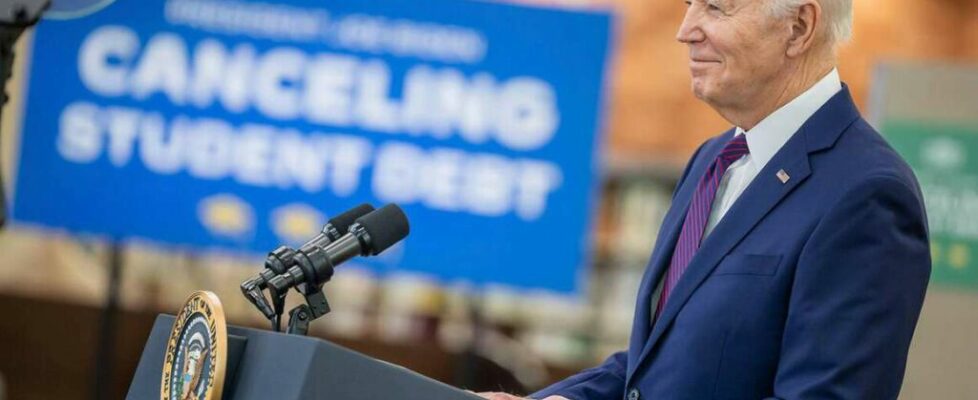Biden Thinks He Found a Student Loan Loophole
Despite suffering a decisive defeat at the Supreme Court last year, the Biden administration is making a second attempt at sweeping, automatic student loan forgiveness. These new efforts are less ambitious than the previous attempt but still might cost taxpayers billions if enacted.
Student loan forgiveness has long been key to President Joe Biden’s education policy. In August 2022, the Education Department unveiled a plan for broad loan forgiveness, seeking to discharge up to $20,000 in federal student loans for individual borrowers earning less than $125,000 and couples earning less than $250,000 annually.
The cost of one-time forgiveness was estimated at $360 billion and was quickly challenged in court. The Supreme Court formally blocked the plan in June 2023, ruling it was an unconstitutional exercise of spending authority.
The Court slapping his hand hasn’t stopped Biden. The Education Department’s 2022 proposal included major changes to the federal student loan program. Most notably, it created a much more generous income-driven repayment (IDR) plan, allowing borrowers to gain forgiveness more quickly and pay back significantly less of their loans (though this has also been halted in federal court).
These and other changes have already contributed an estimated $145 billion increase to the 2024 federal budget deficit. But that wasn’t enough. In April, Biden announced another major effort to forgive federal student loans.
“While Republican elected officials try every which way to block millions of their own constituents from receiving student debt cancellation, President Biden has vowed to use every tool available to cancel student debt for as many borrowers as possible, as quickly as possible,” reads an April White House press release. “President Biden from Day One has worked to fix the student loan system and make sure higher education is a ticket to the middle class.”
Despite those grand pronouncements, this second effort is more modest in scale, likely in hopes of avoiding legal challenges. The new plan has five major provisions, each building on and expanding a preexisting forgiveness program.
First, the proposal would help borrowers whose balances have increased due to unpaid interest, seeking to cancel up to $20,000 of accrued interest for each borrower. The plan would forgive all accrued interest for any borrowers enrolled in an IDR who also earn less than $120,000 a year, or $240,000 a year for couples.
Biden’s plan would also effectively forgive all student loan debt after 10 years for borrowers with small balances. Under the proposed changes, the Education Department would automatically cancel debt held by those who are eligible for loan forgiveness under an existing plan but haven’t enrolled. All borrowers are eligible to enroll in Biden’s new IDR, which provides forgiveness after 10 years for those with balances under $12,000.
A third change targets borrowers who have been in repayment for over 20 years for undergraduate borrowers and over 25 years for graduate borrowers. According to April’s press release, “borrowers would not need to be on an income-driven repayment plan to qualify” for loan forgiveness.
Students who borrowed to pay for degrees at schools that “lost their eligibility to participate in the Federal student aid program or were denied recertification because they cheated or took advantage of students,” as well as schools that closed and left students in similar precarity, will also receive loan forgiveness under Biden’s proposal.
The final major element of the plan will provide forgiveness for students experiencing nebulously defined “hardship.” The department has indicated that it would target borrowers with high medical or child care expenses and those at “high risk” of defaulting on their loans.
It’s not clear when these proposals will go into effect, if they ever do. In August, Education Secretary Miguel Cardona announced the final changes would be released sometime in the fall—but didn’t specify how close to the upcoming election.
With these policy changes coming so close to the end of Biden’s term, it’s difficult to know just how seriously to take them. Should Vice President Kamala Harris win in November, Biden’s student loan policy would presumably be carried over, albeit likely delayed.
But if Donald Trump becomes president a second time, the proposal will almost certainly be scrapped. Promising debt relief to millions may be a good strategy to get them to the polls, but announcing these changes so late in the game feels like just that—an election strategy rather than earnest policy making.
The post Biden Thinks He Found a Student Loan Loophole appeared first on Reason.com.
